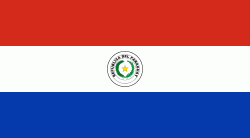Fernando de la Mora (Fernando De La Mora)
Fernando de la Mora is a city located in the Central Department, and is part of the metropolitan area of Asunción, in Paraguay. With an estimated of 183,390 inhabitants, the city is the seventh most populated of the country.
The city is divided in two areas: the South area and the North area, with a total surface of 21 square kilometers. It is crossed from North to South by many paved streets and avenues, such as Zavala Cue, Pitiantuta, 10 de Julio, Las Residentas, among others.
It has a total number of 62 green spaces, a sports center, a football court for national and international games, 20 public schools and about 30 private schools. Among the public schools is the Colegio Nacional de EMD Dr. Fernando de la Mora, this school has about 3,000 students that assist at morning afternoon or night classes. Currently is the biggest school in the city and it has its own sports center. Another school the “Dr. Eligio Ayala” School of Infirmary, that provides elementary, basic, and superior education.
The city was once called Zavala Cue. Nowadays it takes its name of Fernando de la Mora, one of the fathers of Paraguayan independence from Spain.
The city is divided in two areas: the South area and the North area, with a total surface of 21 square kilometers. It is crossed from North to South by many paved streets and avenues, such as Zavala Cue, Pitiantuta, 10 de Julio, Las Residentas, among others.
It has a total number of 62 green spaces, a sports center, a football court for national and international games, 20 public schools and about 30 private schools. Among the public schools is the Colegio Nacional de EMD Dr. Fernando de la Mora, this school has about 3,000 students that assist at morning afternoon or night classes. Currently is the biggest school in the city and it has its own sports center. Another school the “Dr. Eligio Ayala” School of Infirmary, that provides elementary, basic, and superior education.
The city was once called Zavala Cue. Nowadays it takes its name of Fernando de la Mora, one of the fathers of Paraguayan independence from Spain.
Map - Fernando de la Mora (Fernando De La Mora)
Map
Country - Paraguay
 |
 |
| Flag of Paraguay | |
Spanish conquistadores arrived in 1524, and in 1537 established the city of Asunción, the first capital of the Governorate of the Río de la Plata. During the 17th century, Paraguay was the center of Jesuit missions, where the native Guaraní people were converted to Christianity and introduced to European culture. After the expulsion of the Jesuits from Spanish territories in 1767, Paraguay increasingly became a peripheral colony, with few urban centers and settlers. Following independence from Spain in the early 19th century, Paraguay was ruled by a series of authoritarian governments characterized by nationalist, isolationist and protectionist policies. This period ended with the disastrous Paraguayan War (1864–70), during which the country lost half its prewar population and around 25–33% of its territory to the Triple Alliance of Argentina, Brazil and Uruguay. In the 20th century, Paraguay faced another major international conflict—the Chaco War (1932–35) against Bolivia—in which it prevailed. Afterwards, the country came under a succession of military dictators, culminating in the 35-year regime of Alfredo Stroessner, which lasted until his overthrow in 1989 by an internal military coup. This marked the beginning of Paraguay's democratic era, which continues to this day.
Currency / Language
| ISO | Currency | Symbol | Significant figures |
|---|---|---|---|
| PYG | Paraguayan guaranà | ₲ | 0 |
| ISO | Language |
|---|---|
| GN | Guarani language |
| ES | Spanish language |















